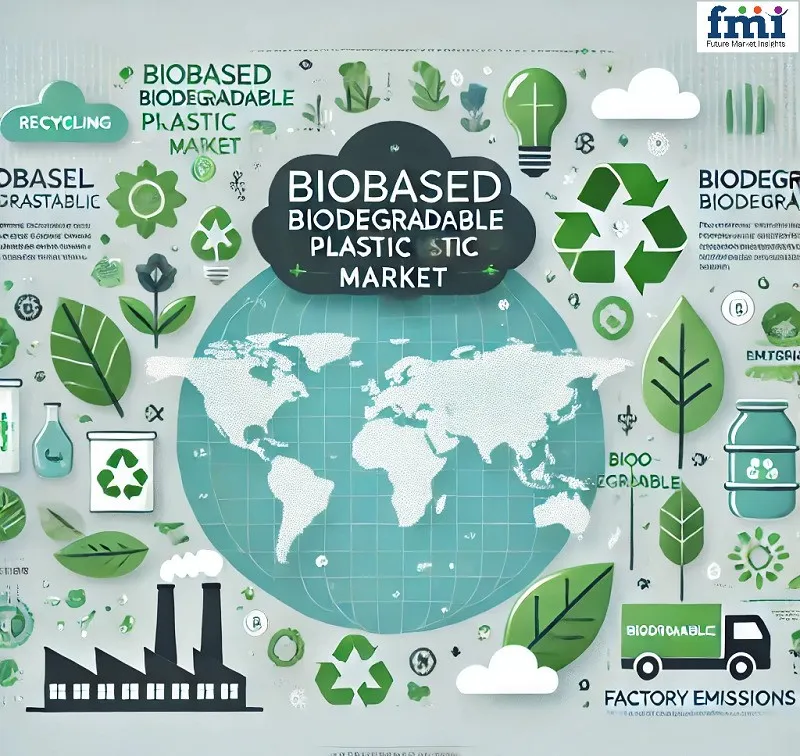The global biodegradable plastics market is undergoing a major transformation driven by increasing environmental concerns and the implementation of stringent regulations aimed at reducing plastic pollution. Governments around the world are introducing policies that ban or limit the use of traditional plastics, thus accelerating the adoption of degradable and renewable alternatives. This shift is also supported by increasing consumer demand for sustainable products and increased environmental awareness, prompting industries to explore environmentally friendly materials.
The market is expected to be worth approximately $6.3 billion in 2025 and is expected to grow to approximately $15.6 billion by 2035, with a compound annual growth rate (CAGR) of 9.5% during the period. This growth trajectory highlights the increasing viability and acceptance of biodegradable plastics in multiple industries, including packaging, agriculture, textiles and automotive. As biopolymer processing technologies advance and economies of scale are achieved, production costs are expected to decrease further, enhancing the competitiveness of these sustainable materials.
Polylactic acid (PLA) and polyhydroxyfatty acid ester (PHA) are driving the market growth to meet the increasing demand for sustainable materials
PLA and PHA are at the forefront of innovation in biodegradable plastics, offering sustainable alternatives to petroleum-based plastics. PLA, made from fermented plant starch, is widely recognized in the packaging and 3D printing fields due to its high biocompatibility and compostability. Market leaders are investing in research and development to enhance the mechanical properties and thermal resistance of PLA, thereby extending its application beyond traditional packaging.
PHA is produced by bacterial fermentation of organic substrates and has significant potential as a key degradable polymer for medical, agricultural and Marine applications. Unlike PLA, PHA can degrade in the natural environment, including the ocean, making it an ideal solution to combat plastic pollution. The company is expanding its PHA production capacity to meet the growth needs and regulatory compliance requirements of the eco-conscious industry.
Applications in packaging and agriculture are driving the market growth
In agriculture, biodegradable plastics are replacing traditional plastic mulch, seed coatings and flower POTS. These materials help improve soil health, reduce the accumulation of plastic waste and increase crop yields. The shift towards sustainable agricultural practices and government support initiatives for biodegradable agricultural products are driving market expansion.
Biodegradable plastics market: Drivers and trends
The major drivers of the bio-based degradable plastics market include the regulatory framework for safe waste treatment and management, environmental initiatives implemented by governments and various agencies, and manufacturers' efforts to reduce dependence on crude oil derived products.
Some of the limiting factors identified in the market include low consumer awareness and the low durability of these plastics relative to conventional plastics.
Key trends in the global biodegradable plastics market include the increasing use of these plastics in packaging applications, bottle and catering disposables manufacturing.
Market growth drivers
Cost reduction
Historically, bio-based biodegradable plastics have been more expensive to produce than conventional plastics, mainly due to high raw material costs and limited production scale. However, continued investment in research and development has led to process innovation and technological advances, resulting in more efficient manufacturing methods.
These improvements are reducing production costs and making bio-based plastics more competitive in the market. As economies of scale are achieved and renewable raw material supply chains are further established, it is expected that costs will be further reduced, thereby improving the economic viability of bio-based biodegradable plastics.
Advanced waste conversion into bioplastics
Innovations in waste management and biopolymer synthesis enable the conversion of organic waste into valuable bioplastics. Techniques such as microbial fermentation and chemical catalysis are being used to convert agricultural residues, food waste and other organic by-products into biopolymers such as PHA.
This approach not only provides a sustainable feedstock for bioplastics production, but also solves waste disposal challenges and contributes to a circular economy. The integration of waste into bioplastics technology is expected to improve resource efficiency and reduce environmental impacts associated with waste management and plastics production
Companies promise to accelerate adoption
More and more companies are committing to reducing environmental stains by incorporating sustainable materials into their products and packaging. Companies across a wide range of industries, including consumer goods, retail and food services, are setting ambitious goals for the transition to biodegradable and renewable plastics.
These commitments are often driven by consumer demand for environmentally friendly products and a desire to comply with evolving regulatory frameworks. As big brands adopt biobased biodegradable plastics, their supply chains and economies of scale are likely to influence broader market adoption, boosting innovation and investment in the industry.
The Transformation and Future Trends of the Bio-based degradable Plastics Market from 2020 to 2024 (2025 to 2035)
Between 2020 and 2024, the bio-based biodegradable plastics market has experienced steady growth, mainly driven by increased environmental awareness and initial regulatory measures. During this period, the market focused on the development and commercialization of key biopolymers such as polylactic acid and PHA, which have important applications in packaging and agriculture. Collaboration between research institutions and industry players has led to technological advances that improve the performance and cost effectiveness of biodegradable plastics.
Future trends from 2025 to 2035 suggest that growth will accelerate, supported by advances in materials science, government policies to promote circular economy programs, and increased investments in bioplastics manufacturing. Innovations in biopolymer blends and bio-based composites are expected to improve the mechanical properties and applicability of biodegradable plastics in a wider range of industries. The expansion of industrial composting and bioplastics recycling infrastructure will also play a key role in mainstream adoption, ensuring sustainable end-of-life solutions for bio-based plastics.
Major country analysis
America
The United States is witnessing a strong expansion of the biobased biodegradable plastics industry, with a projected compound annual growth rate (CAGR) of 22.0% from 2025 to 2035.
This surge is mainly attributed to increased environmental awareness among consumers and proactive government policies aimed at reducing plastic waste. The packaging industry in particular is a significant contributor, accounting for more than 36.8% of total demand in 2022.
The increasing adoption of sustainable packaging solutions by large companies is further driving the market growth.
England
In the UK, the bio-based biodegradable plastics market is expected to grow at a CAGR of 6.2% between 2024 and 2034.
This growth is driven by stringent environmental regulations and a strong consumer shift towards sustainable products. The UK's commitment to reducing single-use plastics has led to the increasing adoption of biodegradable alternatives in various sectors, including food packaging and agriculture.
European Union
The EU is the frontrunner in the adoption of bio-based biodegradable plastics, with a projected CAGR of 21.5% between 2025 and 2035.
This growth is supported by the EU's stringent environmental policies, such as the 2021 Single-use Plastics Directive, which has created a huge demand for biodegradable plastics in areas such as food packaging, agriculture and consumer goods. Countries such as Germany, France, Italy and the United Kingdom contribute significantly to the production and consumption of these materials, making Europe one of the most dynamic markets in the world.
Japan
Japan is a rapidly growing market, with an impressive CAGR of 22.1% expected by 2034.
High government expectations for plastic recycling and the promotion of sustainable materials have significantly influenced this growth trajectory, with the booming e-commerce industry further driving the demand for biodegradable packaging solutions, especially in the online retail and food delivery sectors.







